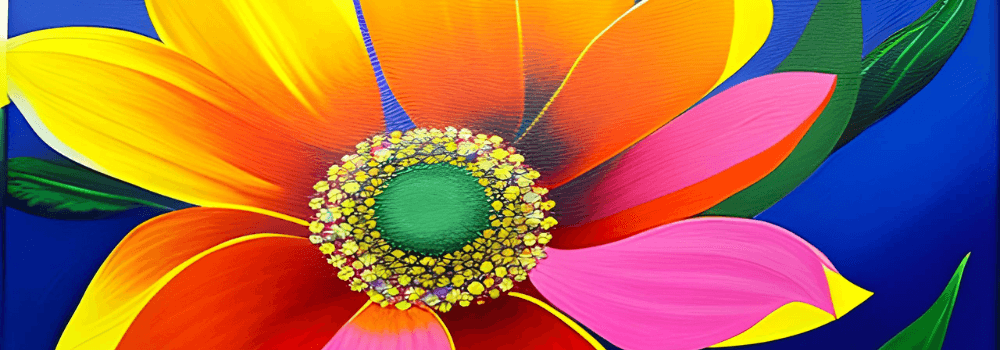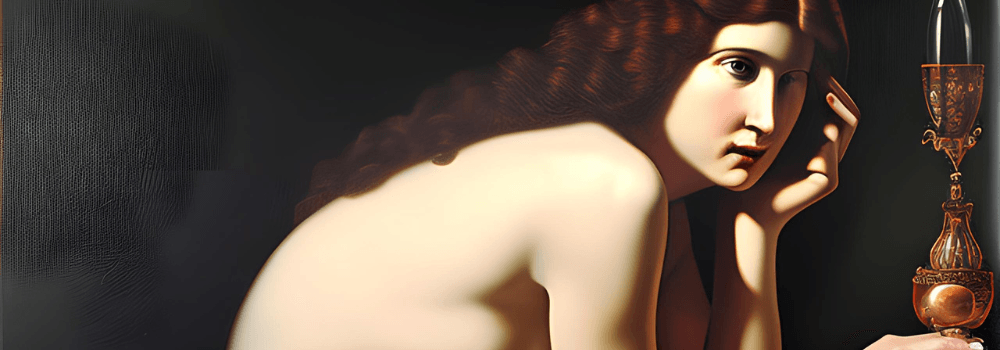
Flower painting is a delightful art form that allows you to express your creativity and capture the beauty of nature on canvas. Whether you're a beginner or an experienced artist, learning to paint flowers can be a rewarding and fulfilling experience. In this article, we will explore the benefits of learning to paint flowers, the different mediums you can use, essential supplies you'll need, step-by-step guides for both acrylic and oil painting, tips and techniques for creating realistic flower paintings, and even ways to learn from the masters. So, let's dive in and unlock your inner artist!
Benefits of learning to paint flowers

Learning to paint flowers comes with a multitude of benefits. Firstly, it allows you to connect with nature on a deeper level, as you observe the intricate details and vibrant colors of different flowers. It also helps you develop patience and focus, as flower painting requires careful observation and attention to detail. Moreover, flower painting is a great stress-reliever and provides a sense of tranquility and calmness. As you immerse yourself in the process, you'll find yourself entering a meditative state that can bring immense joy and relaxation.
Choosing the right medium for flower painting - acrylics or oils

When it comes to flower painting, you have the option to choose between acrylics or oils as your medium. Acrylic painting is a popular choice for beginners due to its fast-drying nature and ease of use. It allows you to build layers, correct mistakes, and experiment with different techniques. On the other hand, oil painting offers a rich and lustrous finish that adds depth and realism to your flower paintings. It has a longer drying time, which gives you more flexibility to blend colors and achieve smooth transitions. Both mediums have their own unique qualities, so it ultimately depends on your personal preference and artistic goals.
Essential supplies for easy flower painting

Before you embark on your flower painting journey, it's important to gather the essential supplies. For acrylic flower painting, you'll need acrylic paints in a variety of colors, brushes of different sizes, a palette, canvas or canvas paper, and a water container for cleaning your brushes. If you choose to paint with oils, you'll need oil paints, brushes, palette knives for mixing colors, a palette, canvas or canvas boards, and odorless mineral spirits for cleaning your brushes. Having a dedicated workspace with good lighting and proper ventilation is also crucial for comfortable and safe painting sessions.
Step-by-step guide to acrylic flower painting for beginners
Let's start with a step-by-step guide to acrylic flower painting for beginners. Begin by sketching the outline of your flower on the canvas using a pencil. Next, apply a base layer of paint using a large brush and block in the general shapes and colors of your flower. Once the base layer is dry, start adding details and highlights using smaller brushes and a lighter shade of paint. Gradually build up the layers, working from the background to the foreground, and blend the colors to create depth and dimension. Don't be afraid to experiment and let your creativity flow!
Step-by-step guide to oil flower painting for beginners

If you prefer the beauty of oil painting, here's a step-by-step guide for beginners. Begin by sketching the outline of your flower on the canvas using a pencil or thin brush dipped in a mixture of paint and odorless mineral spirits. Next, apply a thin layer of paint using a large brush and focus on blocking in the basic shapes and colors. Allow the paint to dry before adding more layers and details. Build up the layers gradually, adding highlights, shadows, and texture to bring your flower to life. Remember to clean your brushes thoroughly between color changes and have patience, as oil paints take longer to dry compared to acrylics.
Tips and techniques for creating realistic flower paintings

Creating realistic flower paintings requires attention to detail and a good understanding of light, shadow, and color. Here are some tips and techniques to enhance your flower painting skills. Firstly, observe your subject closely and pay attention to the subtle variations in color and texture. Use a limited color palette to create harmony and balance in your painting. Experiment with different brush strokes and techniques to capture the delicate petals and intricate details of flowers. Play with light and shadow to add depth and dimension to your paintings. Remember, practice makes perfect, so keep painting and exploring new techniques to improve your skills.
Exploring different styles of flower painting

Flower painting offers a world of artistic possibilities, allowing you to explore different styles and techniques. You can choose to paint realistic flowers, capturing every intricate detail, or you can opt for a more abstract approach, focusing on the essence and emotions that flowers evoke. Experiment with different brushwork, color palettes, and compositions to find your unique style. Don't be afraid to step outside your comfort zone and try new things. The beauty of flower painting lies in the endless possibilities and the freedom to express yourself.
Learning from the masters - The beauty of oil painting with Gary Jenkins

One of the best ways to improve your flower painting skills is by learning from the masters. Gary Jenkins, a renowned artist known for his stunning oil flower paintings, offers a wealth of knowledge and inspiration. His TV series, "The Beauty of Oil Painting with Gary Jenkins," takes you on a journey through the mesmerizing world of oil flower painting. Each episode provides valuable insights into techniques, composition, and color mixing, allowing you to learn from his expertise. Watching and studying the works of master artists like Gary Jenkins can help you refine your skills and take your flower paintings to the next level.
Online courses and tutorials for easy flower painting

If you prefer a more structured approach to learning, there are plenty of online courses and tutorials available to help you master the art of easy flower painting. Websites like Udemy, Skillshare, and YouTube offer a wide range of courses and tutorials taught by experienced artists. These resources provide step-by-step instructions, tips, and techniques to help you improve your skills at your own pace. Whether you're a beginner or looking to refine your existing skills, online courses and tutorials are a great way to learn and grow as an artist.







Leave a comment
All comments are moderated before being published.
This site is protected by hCaptcha and the hCaptcha Privacy Policy and Terms of Service apply.